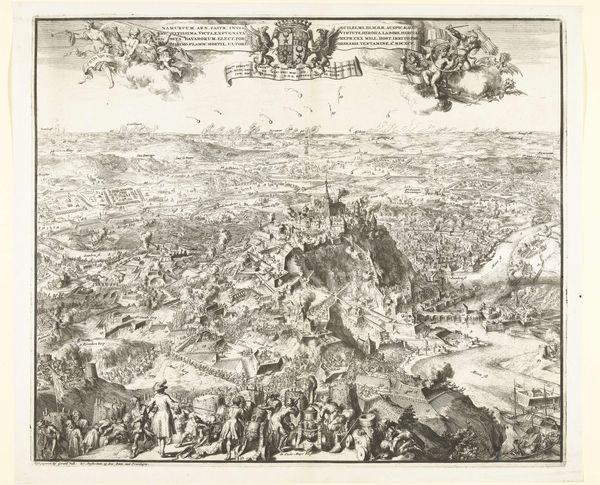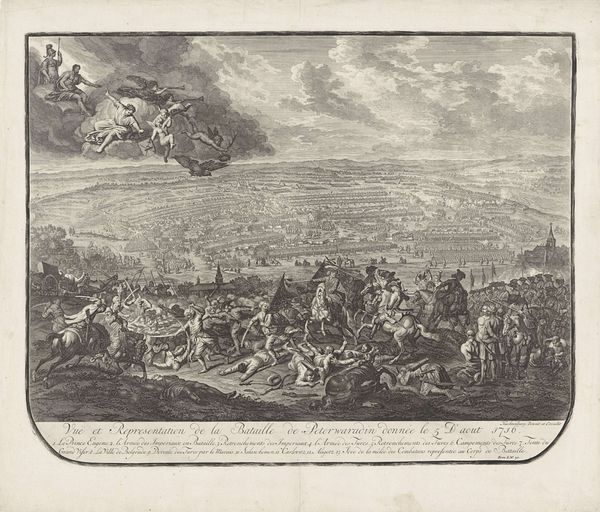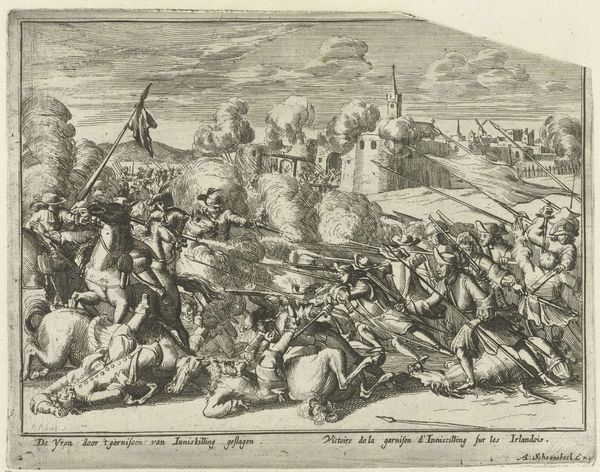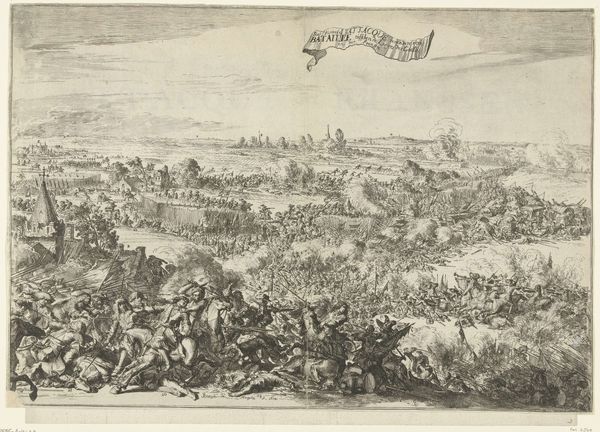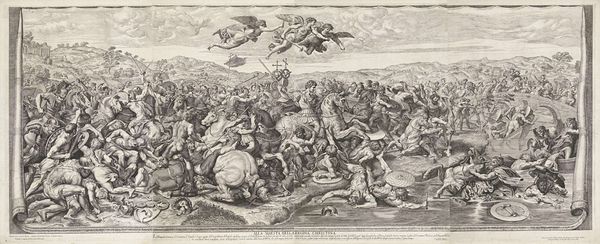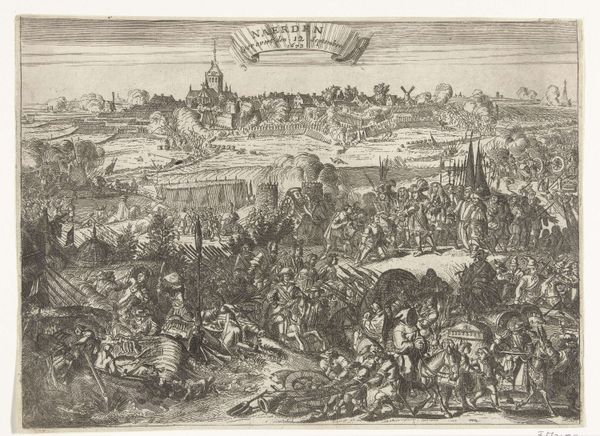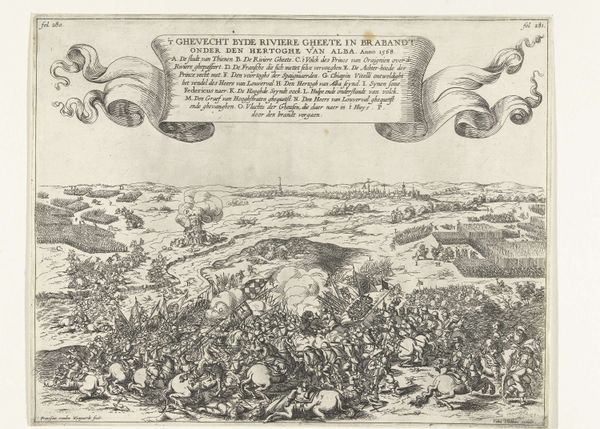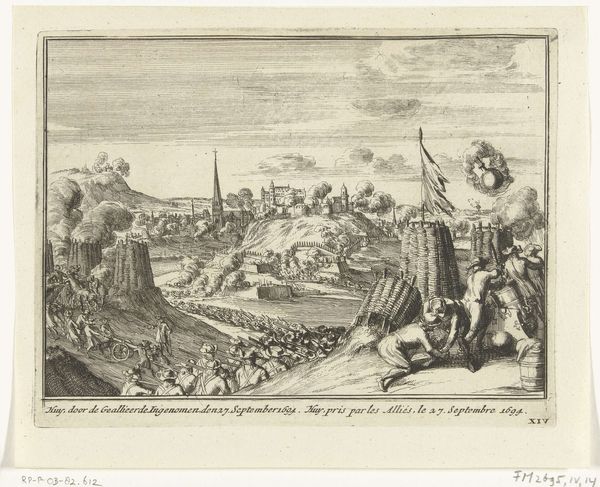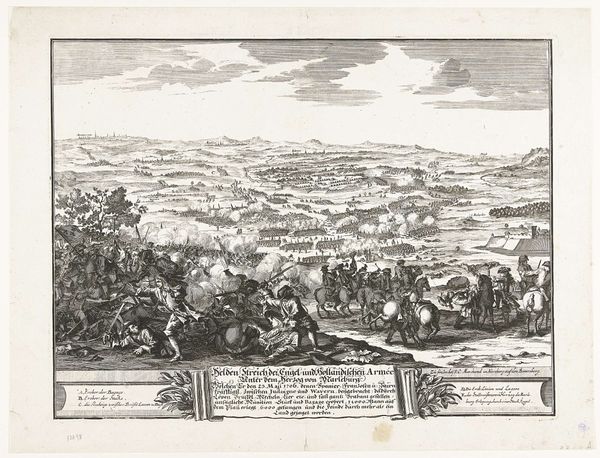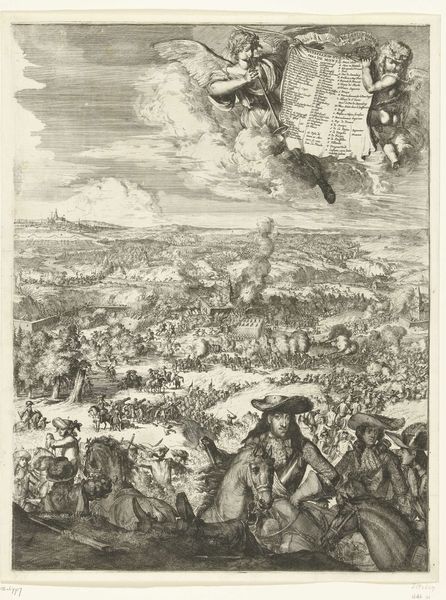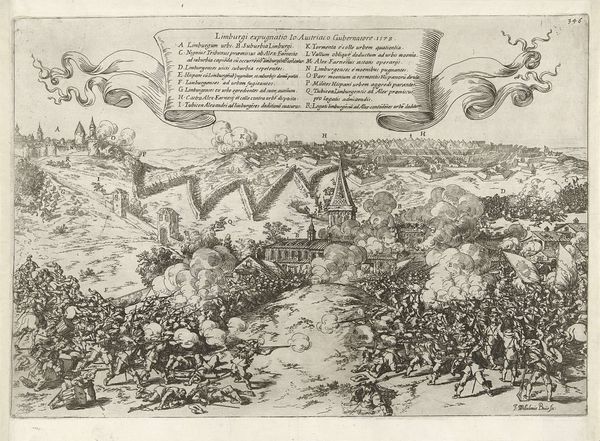
print, engraving
#
baroque
# print
#
landscape
#
figuration
#
line
#
history-painting
#
engraving
Dimensions: height 263 mm, width 340 mm
Copyright: Rijks Museum: Open Domain
Curator: This engraving by Coenraet Decker from 1674, now at the Rijksmuseum, depicts the "Battle of Seneffe." It is a chaotic yet detailed representation, what are your initial thoughts on this particular print? Editor: Immediately, I'm struck by the sheer density of the scene. The composition feels overloaded, almost suffocating, with figures crammed into every available space. It gives the impression of a brutal, close-quarters conflict, doesn’t it? Curator: Absolutely. Consider Decker's line work—it creates this visual texture and energy, which speaks to the physical labor required to produce such a complex engraving. Prints like this, circulated widely, were essential for shaping public opinion about conflicts and rulers. The baroque love for dramatic dynamism serves that end well. Editor: Agreed. Focusing on the upper register, the idealized portrait nestled within emblems of power… it seems to present an idea of leadership remote from the grit and toil that the visual vocabulary is attempting to capture. Curator: And that positioning is precisely what communicates authority. But what of the laborers, those soldiers producing the true spectacle and product of the work—violence. It forces me to ask to whom, ultimately, this representation catered to. Editor: Interesting point! Looking more closely at the dense pattern of lines and cross-hatching, they coalesce into identifiable forms—soldiers, horses, cannons—and give structure and depth to the image. How effective, structurally, do you find Decker's composition in conveying movement and intensity across such a broad field? Curator: The swirling chaos, a manufactured storm of war sold and distributed in print to a burgeoning art consumer class. Its effect and dissemination, its use in bolstering state narrative: these qualities resonate with material and ideological functions. I wonder, could the availability of this image itself played a role in reinforcing the inevitability and, dare I say, the acceptance of continuous warfare in society? Editor: It is difficult to argue otherwise when observing how form renders conflict so spectacularly—though whether it effectively translated the horror would be something only those extant could tell. Thank you. Curator: A thought provoking analysis indeed, enriching our comprehension, thank you.
Comments
No comments
Be the first to comment and join the conversation on the ultimate creative platform.

